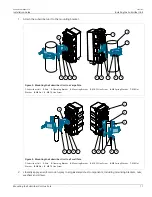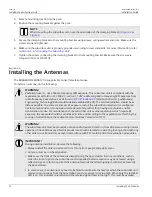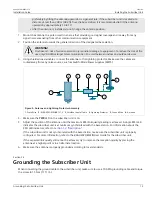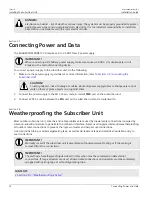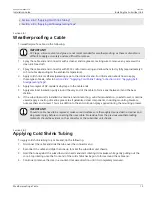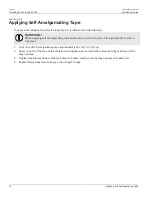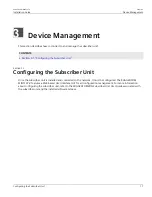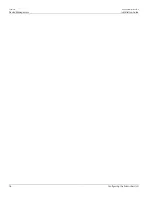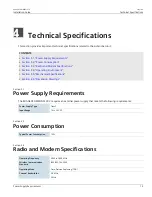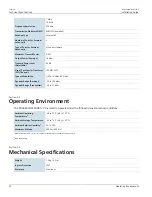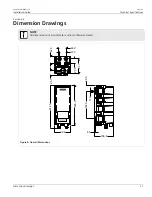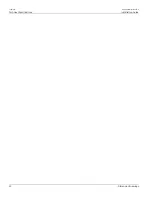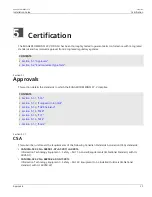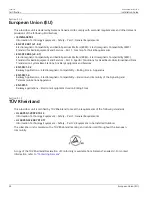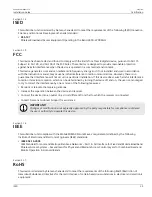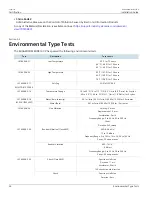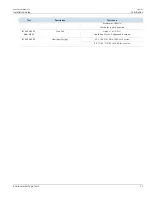
Chapter 2
Installing the Subscriber Unit
RUGGEDCOM WIN5137-V
Installation Guide
12
Installing the Antennas
3. Select a mounting location on the pole.
4. Position the mounting bracket against the pole.
NOTE
When mounting the subscriber unit, note the orientation of the clamping bracket in
.
5. Secure the clamping bracket to the mounting bracket using screws, spring washers and nuts. Make sure the
screws are hand tightened.
6. Make sure the subscriber unit is properly grounded according to local standards. For more information, refer
Section 2.6, “Grounding the Subscriber Unit”
7. Tighten the screws connecting the clamping bracket to the mounting bracket. Make sure the screws are
torqued to 14 N·m (10 lbf-ft).
Section 2.5
Installing the Antennas
The RUGGEDCOM WIN5137-V supports N-Connect female antennas.
To install an antenna, do the following:
WARNING!
Radiation hazard – risk of Radio Frequency (RF) exposure. This subscriber unit is compliant with the
requirements set forth in FCC CFR 47, section 1.1307, addressing Radio Frequency (RF) exposure from
radio frequency base stations, as defined in
[http://transition.fcc.gov/Bureaus/
Engineering_Technology/Documents/bulletins/oet65/oet65.pdf]. The emitted radiation should be as
little as possible. To achieve minimum RF exposure, install the subscriber unit when it is configured
not to transmit and set it to operational mode remotely, rather than having a technician enable
transmission on-site. For maintenance of the subscriber unit or other operations which require RF
exposure, the exposure should be minimized in time and according to the regulations set forth by the
country of installation or the Federal Communications Commission (FCC).
WARNING!
The subscriber unit must be placed at a distance of at least 20 cm (8 in) from all persons during normal
operation. The antennas used for this product must not be located or operating in conjunction with any
other antenna or transmitter, except in accordance with FCC multi-transmitter evaluation procedures.
IMPORTANT!
During antenna installation, observe the following:
• Always install the antenna at least 40 cm (16 in) from people and public areas.
• Antenna must be in a fixed position.
• Make sure the front of the antenna is always facing the base station. In some conditions, such as
when the line of sight to the subscriber unit is impeded, better reception may be achieved using a
reflected signal. In this case, direct the antenna towards the reflecting object, rather than towards
the base station.
• In some cases, the antenna may need to be tilted to make sure the level at which the subscriber unit
receives transmissions from the base station (and vice versa) is not too high. When only the last RSSI
LED is on, this indicates saturation and the received signal level is too high. This must be avoided,














